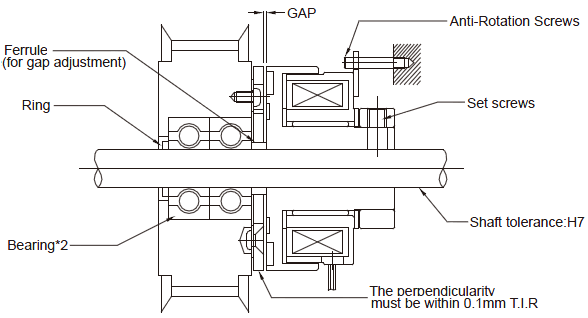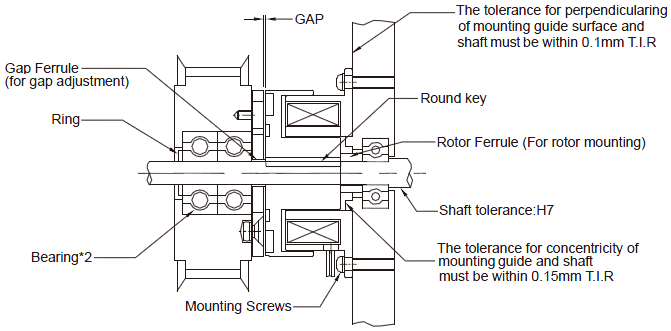Examples of installation & Application

![]() Initial Torque:
Initial Torque:
Although armatures, rotors, and brake faces are machined or even lapped as flat as possible at manufacture, peaks and valleys remain on the surfaces. When a new clutch or brake engages, the contact area is initially confined to the peaks on the mating surfaces. This smaller contact area means torque can be as much as 50%~70% less than the unit’s static torque rating.
To get the full torque, users need to burnish mating surfaces. Burnishing cycles the unit, letting those initial peaks wear down so there is more surface contact between the mating faces. These cycles depending on the amount of torque required, should be lower in inertia, speed, or both, than the end application. Normal operations wear down contact surfaces as burnishing does. Every time a clutch or brake engages during rotation, a certain amount of energy is transferred as heat, please also note that the heat can not be higher than 80℃.
![]() Operating Guidelines:
Operating Guidelines:
 Please prevent the friction surface from grease contamination or it would cause low torque.
Please prevent the friction surface from grease contamination or it would cause low torque. To insure normal operation of armature plate, the air gap must be noticed and kept within +/-20% of specification while adjusting gap. Voltage needs to be input for inspection of armature plate. The air gap needs to be re-adjusted if armature plate can not be released or engaged.
To insure normal operation of armature plate, the air gap must be noticed and kept within +/-20% of specification while adjusting gap. Voltage needs to be input for inspection of armature plate. The air gap needs to be re-adjusted if armature plate can not be released or engaged. Please do not knock or drop clutches or brakes while mounting. A deformation of parts may cause failures.
Please do not knock or drop clutches or brakes while mounting. A deformation of parts may cause failures. Please do not bend the plating spring or plating hub which assembled with the plating spring. A deformation may cause failures.
Please do not bend the plating spring or plating hub which assembled with the plating spring. A deformation may cause failures.





